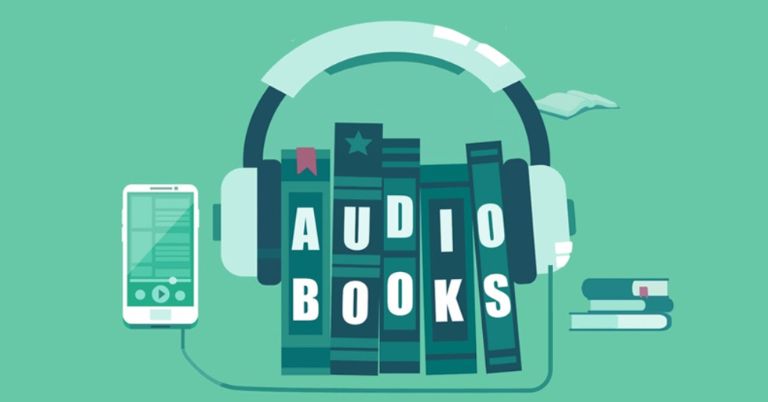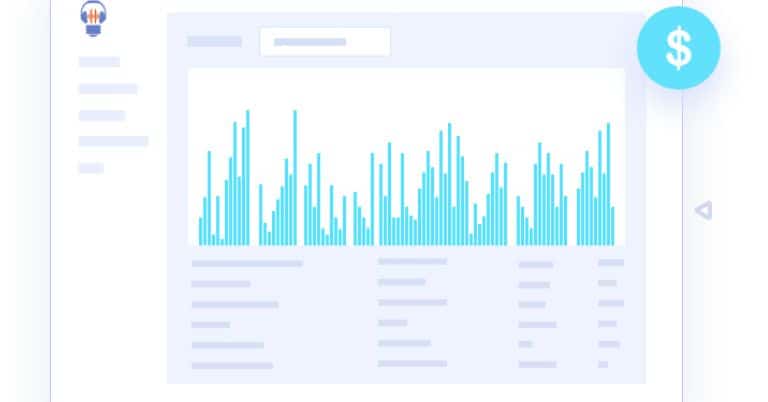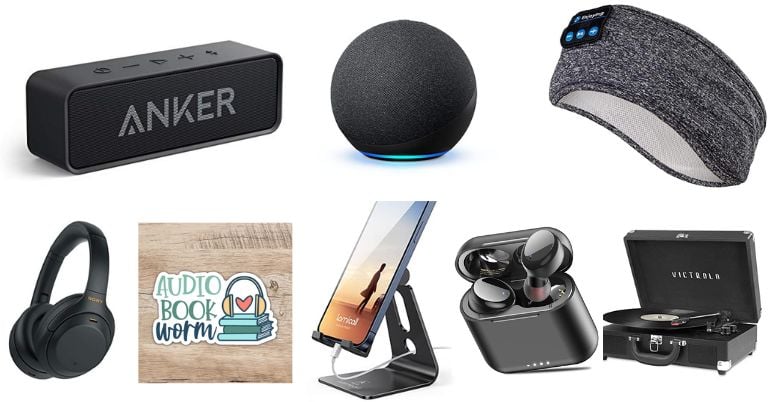The final sound using the best microphone for audiobook recording will be clear, undistorted, and noise-free.
So, what microphone to choose to achieve such an effect?
Let's check it out asap:
In a Hurry? Here’s Our Top Picks…
Last update on 2024-04-23 / Affiliate links / Images from Amazon Product Advertising API
Best Microphone for Audiobook Recording
Last update on 2024-04-23 / Affiliate links / Images from Amazon Product Advertising API
Overall Rating: 4.8/5
The Blue Yeti USB Microphone performs well in all aspects. If you are recording an audiobook for the first time, then it will give you satisfactory recording results as your first microphone.
Key Features: |
|---|
Type of Microphone: Condenser |
Connectivity Technology: USB |
Patterns: Cardioid/Omni/Figure-8/Stereo |
Frequency Response: 20Hz - 20kHz |
Because it uses a custom three-capsule array, it will bring a very professional sound quality when recording audiobooks.
And it has 4 pickup patterns. Using the most common cardioid pattern, you capture the sound source directly in front of the microphone.
What's more, if you're using Blue Yeti for audiobook recording, you can easily switch to other patterns if you need sound from elsewhere in the room.
And its ultra-high sensitivity makes it very clear when picking up the sound.
Blue Yeti vs Blue Snowball iCE
Compared to the previous Blue Snowball iCE USB Microphone, the Blue Yeti has improved in many ways. Specifically as follows:
Last update on 2024-04-23 / Affiliate links / Images from Amazon Product Advertising API
Blue Yeti USB Microphone Review
Conclusion:
It is the best usb microphone for audiobook recording, from features, performance to price.
Last update on 2024-04-23 / Affiliate links / Images from Amazon Product Advertising API
Overall Rating: 4.9/5
The Shure SM7B is a very professional dynamic microphone for recording audio books at home and in places where the environment is not quiet enough.
Key Features: |
|---|
Type of Microphone: Dynamic |
Connectivity Technology: XLR |
Patterns: Cardioid |
Sensitivity: (@ 1 kHz, open circuit voltage) -59 dBV/Pa (1.12 mV) |
Frequency Response: 50Hz - 20kHz |
When you record an audiobook, there may be sounds of cars passing by, people arguing, etc.
In this case, if you use a highly sensitive condenser microphone, the final recorded audiobook will be a lot of noise. A dynamic microphone like the Shure SM7B can solve this problem.
It uses an XLR connection so you can control the sound better. But you should know that the XLR's microphone requires an audio interface to record.
Also, you may need the Cloudlifter CL-1 for audio gain. These will result in a bit more expensive in the final price.
Plus, it has a smooth frequency response and a cardioid pattern, making it the best microphone for audiobook.
Finally, this mic also comes with an air suspension to help with shock absorption. And there is also electromagnetic shielding to block unwanted noise. And a built-in popular filter can save you a fortune.
Shure SM7B vs Shure MV7
The inspiration for the production of Shure MV7 Microphone comes from Shure SM7B. But it places more emphasis on mid frequencies, focusing on transparency and clarity of sound.
In addition, the Shure MV7 has XLR and USB connections.
Last update on 2024-04-23 / Affiliate links / Images from Amazon Product Advertising API
Shure SM7B Microphone Review
Conclusion:
If you have previous experience with microphones, the SM7B will be the best microphone for recording audio books. For newbies, you may know some of the above mentioned knowledge in order to use it better.
Last update on 2024-04-23 / Affiliate links / Images from Amazon Product Advertising API
Overall Rating: 4.6/5
In fact, MAONO AU-A04 is a microphone set, you hardly need to buy anything extra, it is more suitable for beginners. And the price is much cheaper than other audiobook microphones.
Key Features: |
|---|
Type of Microphone: Condenser |
Connectivity Technology: USB |
Patterns: Cardioid |
Sensitivity: -38dBA±3dBA (0dB=1V/Pa at 1kHz) |
Frequency Response: 30Hz - 16kHz |
It uses a USB connection and has the characteristics of plug and play. Very easy to install and use.
What's more, MAONO AU-A04 has a big advantage in one performance index of the microphone.
That is, its sampling rate is 192kHz/24bit, which is higher than the Blue Yeti (16 bit/48 kHz) and the same as the Shure SM7B (24 bits/192 kHz).
Its cardioid pattern will help pick up sounds right in front of you. However, it does not have a real-time monitoring function like the Blue Yeti, and you need to view the sound of the entire audiobook after the recording is over.
In addition, this microphone set also includes a shock mount and a pop filter to reduce noise generation.
Unless you want to connect the microphone to the phone, then you need an OTG adapter. Otherwise, no accessories are required.
Finally, the Fifine K669 is a microphone set comparable to the Maono AU-A04. They have the same price and basically the same function.
Maono AU-A04 Microphone Set Review
Conclusion:
If you're on a budget and you're using a mic for the first time, you want to get all the mic gear associated with recording audio books.
Then the Maono AU-A04 as one of the best microphones for audiobook recording is perfect for you.
Last update on 2024-04-23 / Affiliate links / Images from Amazon Product Advertising API
Overall Rating: 4.8/5
The HyperX QuadCast S is a gorgeous-looking and powerful audiobook microphone.
Key Features: |
|---|
Type of Microphone: Condenser |
Connectivity Technology: USB |
Patterns: Cardioid/Bidirectional/Omnidirectional/Stereo |
Sensitivity: -36dB (1V/Pa at 1kHz) |
Frequency Response: 20Hz - 20kHz |
A very unique feature of the HyperX QuadCast S is its brilliant RGB lighting. And if you download the HyperX Ngenuity software for PC, you will be able to adjust the lighting effects yourself.
And you can also determine whether you are recording an audio book normally by whether the indicator light is on or off, which brings great convenience.
Blue Yeti vs HyperX QuadCast S
Like the Blue Yeti, it has four pickup patterns and the same frequency of response.
But there are some extra features that the Blue Yeti doesn't have, like an internal pop filter. And its gain control is at the bottom of the mic, making it easier to operate.
HyperX QuadCast S vs HyperX QuadCast
Compared with the previous HyperX QuadCast, it has two main improvements.
The first is that when using QuadCast to record audiobooks, its lighting effect is only red.
Another aspect is that the QuadCast S uses a USB type C connection.
HyperX QuadCast S Review
Conclusion:
It's a great Blue Yeti alternative, and in many ways, the best audiobook microphone.
5. Rode NT1-A
Last update on 2024-04-23 / Affiliate links / Images from Amazon Product Advertising API
Overall Rating: 4.8/5
We all know to minimize unnecessary noise when recording audio books. However, the microphone device itself has a certain sound. The self-noise of the Rode NT1-A microphone is only 5bB(A).
Compared with other microphones, this sound can be ignored. So it is called the quietest microphone in the world. It is the best microphone for voice recording.
Key Features: |
|---|
Type of Microphone: Condenser |
Connectivity Technology: XLR |
Patterns: Cardioid |
Sensitivity: -32 dB re 1 Volt/Pascal (25 mV @ 94 dB SPL) +/- 2 dB @ 1kHz |
Frequency Response: 20Hz - 20kHz |
Maximum SPL: 137dB |
Its large diaphragm can make the sound of the audiobook warmer and clearer.
And its maximum SPL reaches 137dB. This means that when you use this cardioid microphone to record other sounds: for example, add a guitar sound to a scene in the audiobook. Even if the sound of the guitar is loud, it will not be distorted.
In addition, the quality of this microphone's shock mount and pop filter is also very high, don't worry about it is not stable enough. However, this also causes the overall weight of this product to be relatively heavy.
What's more important is its warranty service: after registration on the official website, it can be extended from 1 year to 10 years.
NT1-A vs Rode NT1
Compared with the previous NT1, NT1-A has more advantages in some aspects, as follows:
Last update on 2024-04-23 / Affiliate links / Images from Amazon Product Advertising API
Rode NT1-A Review
Conclusion:
For recording human vocals, it can achieve a good effect, it is the best microphone for audiobooks.
How to Choose the Best Microphone for Audiobook Recording?
The global audiobook market was US $ 4.21 billion in 2021, and it is expected that from 2022 to 2030 will grow at a compound annual growth rate (CAGR) of 26.4%.
The audiobook market in the United States in 2021 is US $ 180 million, and it is expected that the compound annual growth rate from 2022 to 2030 is 24.8%.
According to another survey, the proportion of adults who had heard audiobooks in the United States reached 45%.
This is a huge number.
This is related to the widespread use of smartphones, headphones, and smart homes.
Of course, this is also inseparable from the high-quality records of audiobooks.
For the narrator, the equipment for recording the audiobook is mainly microphones and headphones, as well as some accessories.
Different scenarios need to choose different microphones.
Condenser vs Dynamic Microphones
According to their transducer principle, we mainly explain the two microphone types: condenser microphone and dynamic microphone.
Condenser Microphone
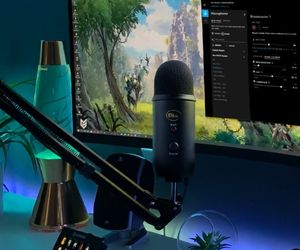
Condenser microphones use the principle of charging and discharging capacitors.
The vibration of the sound drives a pole plate (ultra-thin metal film) of the capacitor, and the vibration of this pole plate changes the distance between the two pole plates, which in turn changes the capacitance.
When the capacitance becomes larger, the power supply charges the capacitor. And when the capacitance becomes smaller, the capacitor discharges.
Thereby, a current is generated in the circuit and the sound signal is converted into an electrical signal.
Conclusion:
If you're recording audiobooks in a quiet place, a condenser mic is your first choice.
Dynamic Microphone
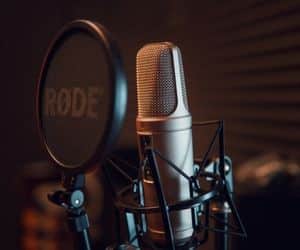
The dynamic microphone uses the principle of electromagnetic induction.
The wire coil is mounted on the diaphragm and placed between the magnetic fields of the magnets.
As the sound pressure changes, the induced current is generated by the continuous movement in the magnetic field, thereby converting the sound signal into an electrical signal.
Its transduction principle is very similar to that of speakers.
Conclusion:
If the environment for recording audiobooks is not quiet enough, then you can try dynamic microphone.
USB vs XLR Microphones
Simply put, a USB microphone can be directly connected to your computer, while an XLR microphone cannot.
USB Microphone

A USB microphone uses a USB cable to convert sound into a digital signal that can be input to a computer.
If you consider the convenience of a microphone for recording audio books, choose a USB microphone.
XLR Microphone

XLR microphones use an XLR connection to convert sound energy into electrical energy.
Three-pin XLR cables are the most common. It needs an audio interface when it is connected. Relatively speaking, it is more professional.
Polar Pattern
The polar pattern of a microphone refers to the fact that the microphone picks up sound from different directions. Mainly divided into 4 types, namely: Cardioid, Supercardioid, Omnidirectional, Figure-8.
Cardioid
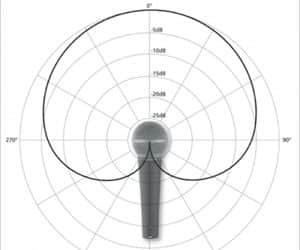
Cardioid mics have the highest front-end sensitivity and also create a proximity effect that makes the sound fuller.
So when it comes to choosing the best microphone for audiobook recording, the cardioid pattern is the best fit.
Sensitivity
Simply put, "Sensitivity" refers to the level of microphone pickup.
In a quiet environment, a high-sensitivity microphone can better reproduce the voice of audiobook narrators.
Recording audio books in a noisy environment, it will be better to choose low sensitivity.
Self Noise
When choosing a microphone for audiobook narration, low self-noise microphone will reduce noise in the entire process. The minimum self-noise microphone is Rode NT1-A, only 5dB.
Frequency Response
Human hearing ranges from 20Hz to 20kHz. Choose a microphone within this range, and preferably one with a flat frequency response.
Pop Filter and Shock Mount
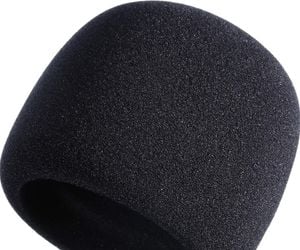
When you're recording an audiobook with a microphone, your saliva, and the pronunciation of some words, may have a plosive sound. These will affect the final effect when recording. Therefore, a pop filter is required.
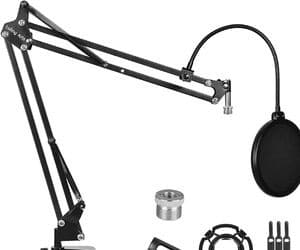
The purpose of the shock mount is to prevent all vibrations caused to the microphone itself.
Such as inadvertent slight movement. For highly sensitive condenser microphones, moving sounds may be recorded, which will affect the final recorded audio book effect. The shock mount can solve this problem.
Audiobook Recording FAQ
What Equipment Do I Need To Be an Audiobook Narrator?
The first is a microphone, as well as related accessories, such as: mic stand, shock mount, pop filter.
If it is an XLR microphone, the audio interface is needed.
Headphones.
A computer is necessary.
You also need some recording software, recommended: AudaCity.
How Much Money Does an Audiobook Narrator Make?
If you are a novice of the narrator, it is expected to be $ 10 to 100.
For those who have worked in this industry for a long time and experienced narrators, it may be as high as 100 to $ 350 per hour.
Conclusion
When you choose the best microphone for audiobook recording, it is not that the more expensive the microphone is, the better.
Choosing a microphone suitable for your own environment will achieve the best recording effect.
Hurry up and choose a microphone for audiobook recording, and then start your audio world!









